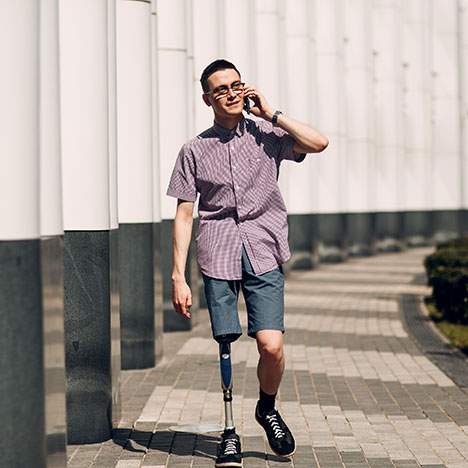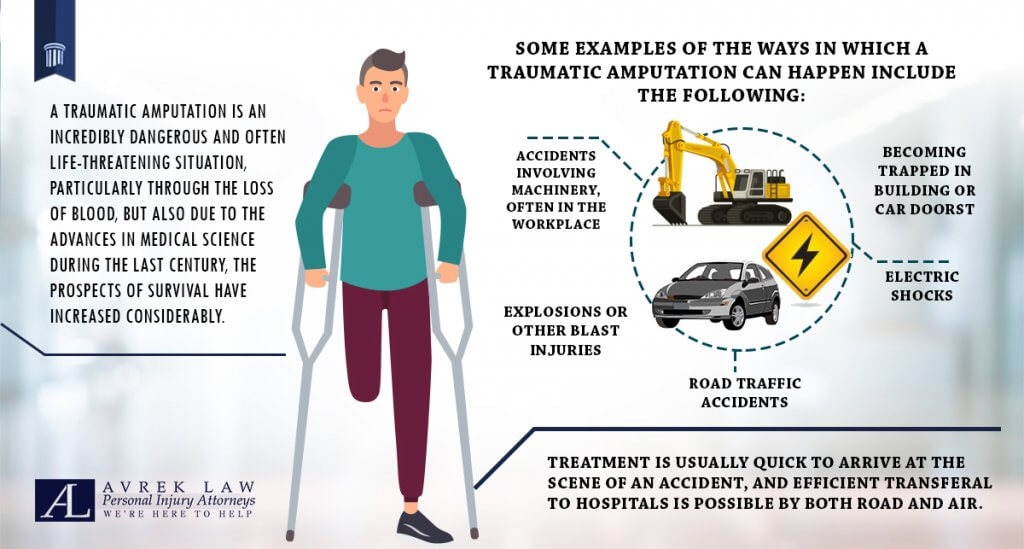Amputation involves the removal of all or part of a limb, may it be an arm, hand, finger, leg, foot or toe. There are currently nearly two million Americans who have had a limb amputated. Of course, some of these amputations occurred due to illness or military combat, but when the amputation is the result of an accident or medical malpractice, an amputation injury lawsuit possible.
In some cases, however, a responsible party cannot be pinpointed, such as if an amputation happened due to a natural disaster like a tornado, earthquake, or hurricane, so it can be difficult to determine how to handle an amputation lawsuit.
Some people involved in the bombings during the Boston Marathon, for instance, lost their legs as a result of the tragedy. Unfortunately, the surviving bomber hardly had the funds to take care of the medical expenses of the injured. Attorneys are still scrambling to determine other possible responsible parties for lawsuits, but it isn’t that easy. Luckily, for those people who were injured, donations have been collected to at least help with their medical costs.
Amputation Injury Claims

Most amputation-related lawsuits are an amputation due to car accident tragedies and construction accidents. If an accident involves the severing of a limb, surgery is required to cauterize the wounds, remove any remaining dead tissue, and to attempt to save as much tissue as possible. Sometimes, if a limb is recovered, it can be reattached. Beyond the costs of surgery and the post-surgical hospital stay (which is two weeks on average), there are the costs of prosthetics/artificial limbs. Those limbs must be installed after the initial wounds have healed. In some instances, amputations require a number of surgeries.
A prosthesis is often custom-made for the patient, usually from an impression cast. This is especially true in the case of a partial finger amputation, as the prosthesis is made of silicone rubber so that it can maintain some flexibility for movement. The silicone is then matched to the individual’s skin tone and given a natural-looking skin texture. Fingernails are even carefully matched. These prosthetics only last three to five years, so an amputation claim needs to take into account the need to have a new prosthesis made every few years.
After the prosthetics, physical therapy must be started in order to learn to move properly with the new limbs. Psychiatric treatment is also usually required to deal with the emotional repercussions of such a catastrophic injury. In other words, the medical costs are astronomical and long-term.
When the loss of a limb impairs an individual’s ability to care for themselves, long-term home care is also needed. A simple loss of a thumb can prevent a person from being able to perform simple tasks that we tend to take for granted on a daily basis, such as buttoning a shirt or heating a can of soup on the stove. Of course, this loss of function also means permanent disability and loss of future income. A vocational counselor can sometimes help to evaluate the injured party and determine what kind of work, if any, he or she could perform.

Some examples of the ways in which a traumatic amputation can happen include the following:
- Accidents involving machinery, often in the workplace
- Becoming trapped in building or car doors
- Electric shocks
- Road traffic accidents
- Explosions or other blast injuries
A traumatic amputation is an incredibly dangerous and often life-threatening situation, particularly through the loss of blood, but also due to the advances in medical science during the last century, the prospects of survival have increased considerably. Treatment is usually quick to arrive at the scene of an accident, and efficient transferal to hospitals is possible by both road and air.
Types of Amputation Claims
Amputations most frequently occur when industrial equipment fails in some way or when equipment is improperly used. Electrical saws are a common culprit. Crush injuries also often lead to amputations, such as during a vehicle accident or when large equipment falls on someone. When such an injury occurs on the job, it is called a Worker’s Compensation or Workman’s Compensation case.
When an amputation injury occurs while not on the job, it is called a personal injury case, unless it has occurred as a result of medical negligence, in which case it is called a medical malpractice case. These cases can occur if, for example, someone is left waiting in the emergency room for too long without care. Bacteria can attack and kill tissue, necessitating the amputation of a limb.
In Worker’s Compensation cases, insurance kicks in to pay for some of the medical expenses, but there is a limit as to how much can be paid. Catastrophic injuries like amputations with lifelong repercussions often require more money than what Worker’s Compensation insurance can provide. A separate personal injury lawsuit might then be filed. In some instances, if the amputation injury was caused by defective or malfunctioning machinery, the case might be called product liability. The responsible party would then be the manufacturer of the machinery or the part within the machinery that caused the malfunction.
Responsibility is not always cut and dry. For this reason, these cases may end up in court rather than settled out of court with the defendant’s insurance company. For example, when a young man’s finger was severed at a party, he sued the parents of the teens who held the party, claiming that the parents did not properly supervise the event.
In a product liability case in which responsibility is clearer, a woman lost both of her legs when a car accident occurred allegedly as a result of a faulty ignition switch. The lawsuit was filed against General Motors, which recalled cars containing the defective switch only after the woman’s accident occurred.
A medical malpractice case example involved a man suing his podiatrist after his toe had to be amputated following the podiatrist’s care for cellulitis. When the man went to the emergency room, he was diagnosed with gangrene and had to lose his toe. He sought $100,000 in medical bills from the malpractice insurance of the podiatrist.
When to Hire an Amputation Injury Attorney
Certain law firms specialize in handling of an amputation injury lawsuit. As an amputation injury law firm, they have an understanding of the nuances and details involved in these cases, both from a medical and legal perspective. They also have a rolodex of experts and medical professionals available to help in the care of the injured party and serve as expert witnesses to support the claims of the lawsuit.
If you or a loved one has experienced an accident that results in amputation, a knowledgeable amputation injury lawyer can simplify the process of the injury claim, and can increase the chances of a successful amputation injury lawsuit. Avrek Law has recovered more than $1 billion for our clients in over 45,000 cases. Read about our “no win, no fee” policy, view our locations, or contact our team by requesting a free consultation – we’re here to help!
